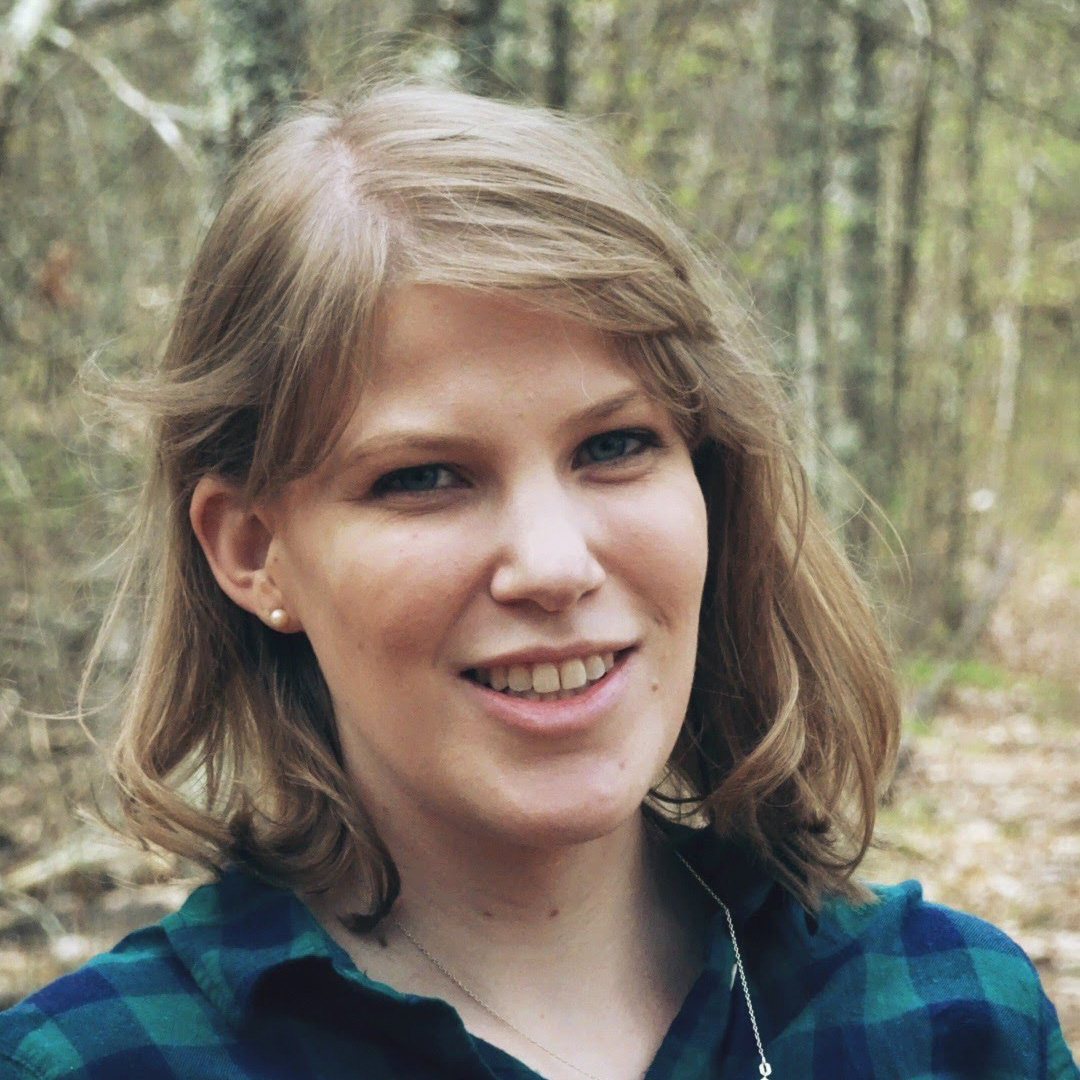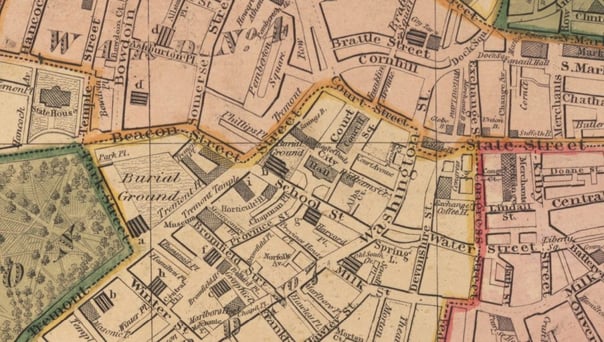When the five founders of the New England Historic Genealogical Society met in January 1845 for the first meeting of the board of their new society, life in the city outside their windows was on the precipice of colossal change.
As Charles Ewer and his cohort were establishing NEHGS 175 years ago, Boston was a city on the rise. Already a celebrated international trade port, Boston saw an economic boom in the 1840s as it welcomed a busy new network of railroads and thoroughfares which further accelerated industry and commerce in the area. By 1845 Boston was one of the largest and wealthiest manufacturing cities in the country, and still growing at a swift rate.
The narrow streets of downtown were busy around the Society’s first home in Court Square (shown above at the center of the map). Just a short walk from the busy wharves, Court Square was not only the home of Boston City Hall and Courthouse but also Boston Latin School, the Boston Museum (founded in 1841), Horticultural Hall (built in 1845), the Boston Concert Hall, the headquarters of the Boston Daily Advertiser, countless shops, and the nearby construction site of the new Boston Custom House (completed in 1849).
Atop this bustling society were the Boston Brahmins, NEHGS’s founders among them. “The Brahmin caste of New England” (as coined by Dr. Oliver Wendell Holmes in 1861) was Boston’s wealthy and influential leading class in the nineteenth century. As the descendants of New England’s earliest settlers, the wealthy, highly-educated Boston Brahmins considered themselves the overseers of the country’s history, culture, and virtue.
Atop this bustling society were the Boston Brahmins, NEHGS’s founders among them.
Their position as enlightened community leaders in the city, though, was challenged as famine in Ireland urged thousands of immigrants to Boston, fundamentally changing the cultural landscape of the city. In just one decade, Boston’s population grew nearly 50 percent, from 93,383 residents in 1840 to 136,881 in 1850; this process would continue at a remarkable rate as Italian, German, and Polish immigrants arrived over the next fifty years. This dramatic shift in the makeup of the city’s population deeply affected Boston’s political and social life well into the twentieth century.
Not only was Boston’s cultural and economic landscape dramatically shifting in 1845, the city’s geographical landscape was also on the verge of a massive transformation. Boston’s population had outgrown the original 790-acre Shawmut peninsula by the 1840s and the need for new land was relentless. Land making had begun in Boston as early as 1807, when 60 feet of ground was removed from the height of Beacon Hill to fill Mill Pond (today’s West End), increasing Boston's land mass by 150 percent. In the 1830s, railroad lines were built through what is today Back Bay, restricting the tides in the flats; by the 1840s, the residents of Boston were reviling the awful “miasma” accumulating over the streets caused by the backup of waste and decay in obstructed marshland.
Plans were made, and by 1850 large swaths of the flats west of Boston Common were being made into new land. In the following decades Boston’s wealthiest citizens would construct new modern townhouses along the grid streets of the new Back Bay neighborhood, moving away from the growing immigrant population of Beacon Hill and the North End.
NEHGS wouldn’t find its home in Back Bay until 1964, and its founders surely would never recognize their city as it stands today 175 years later.
Share this:

About Danielle Cournoyer
Prior to NEHGS, Danielle worked as an Interpretation and Programming Fellow for The Church of the Presidents, where she led guided tours of the historic church and the Adams crypt. Additionally, Danielle has worked as an Historic District Research Aid for the Arlington Historical Commission. She graduated from the University of Massachusetts-Boston with a Master of Arts degree in History in May 2016. Her interests include urban development and history, focusing on Boston and New York.View all posts by Danielle Cournoyer →
